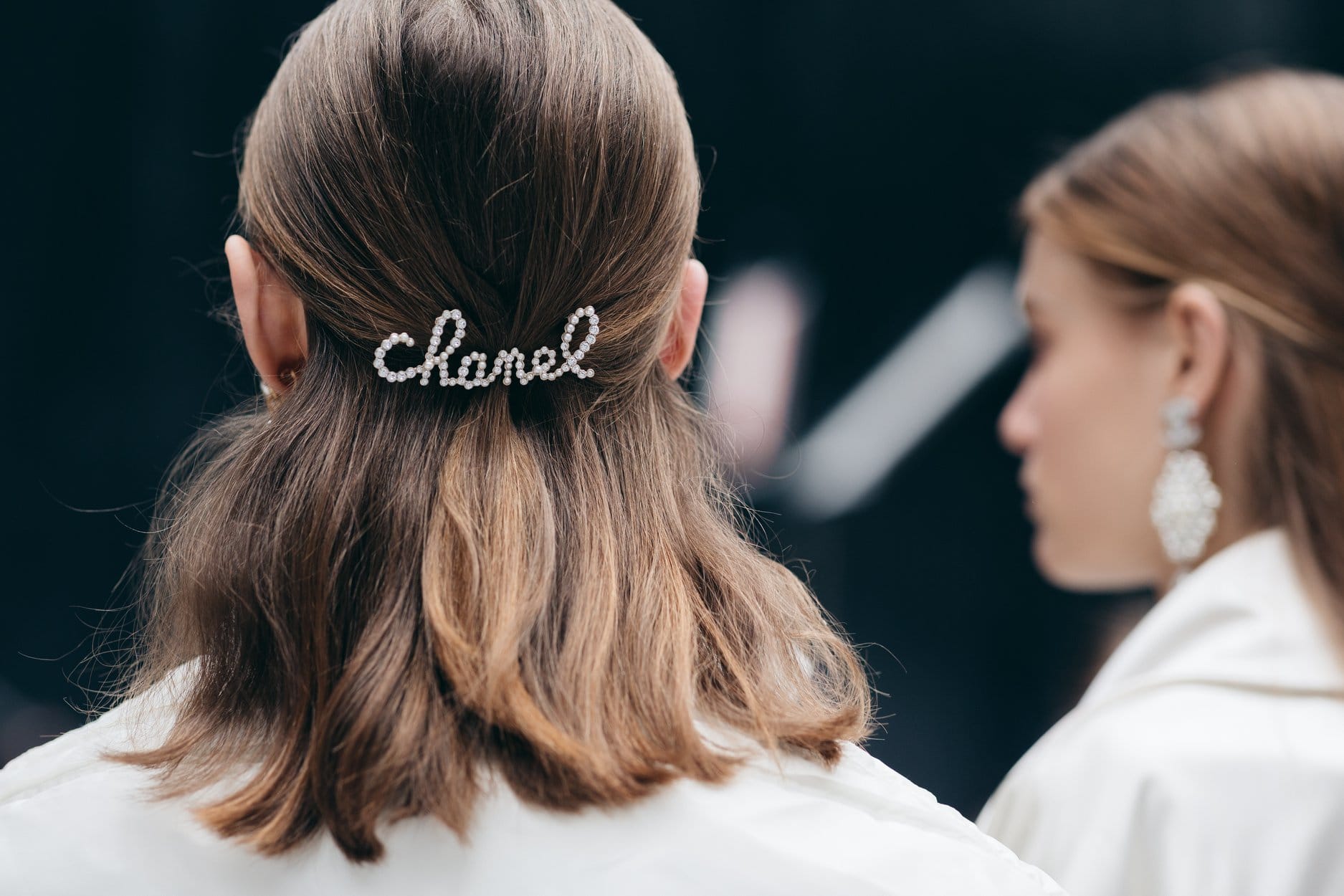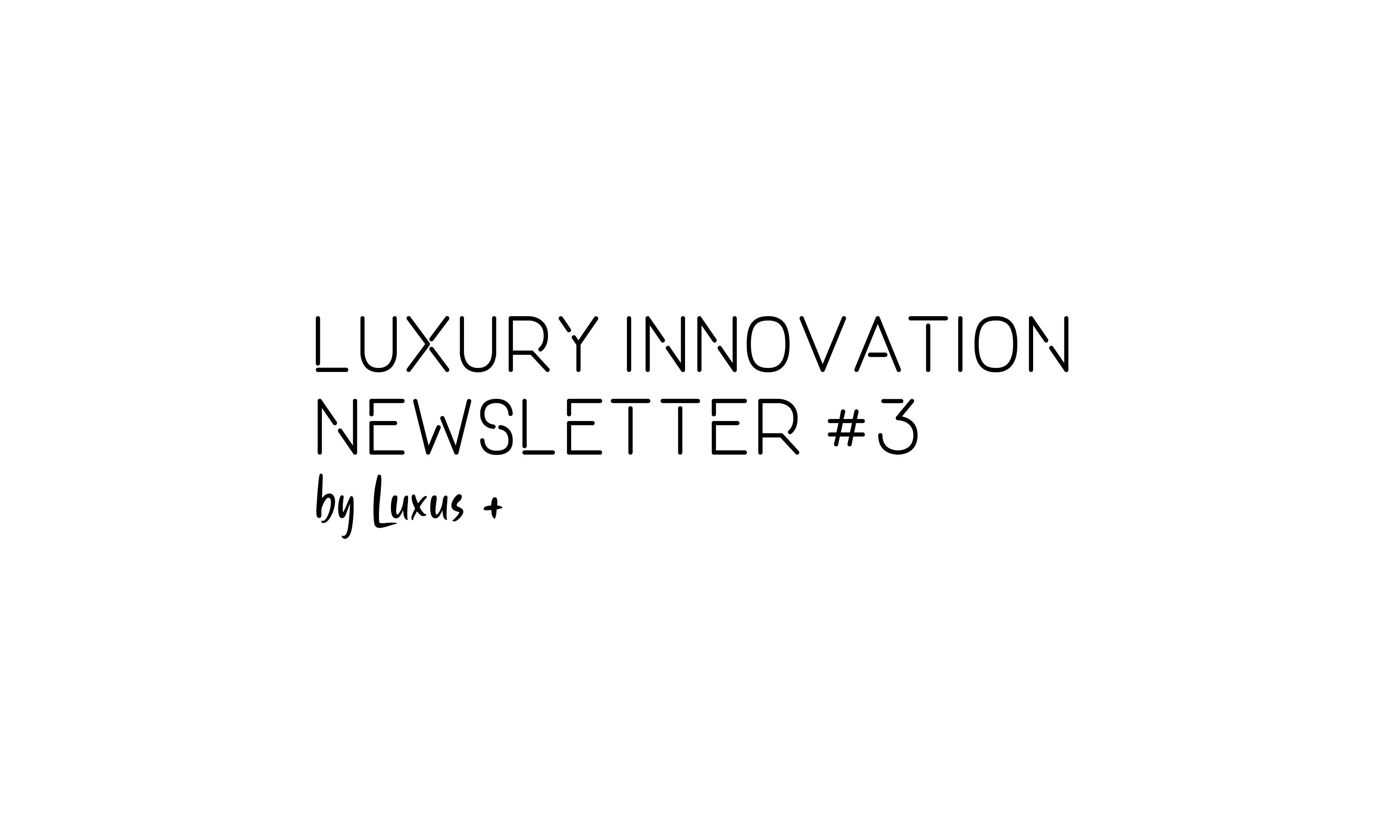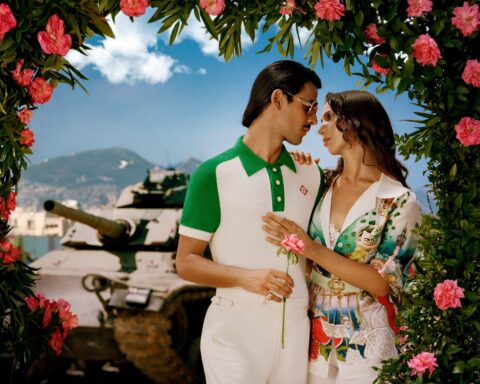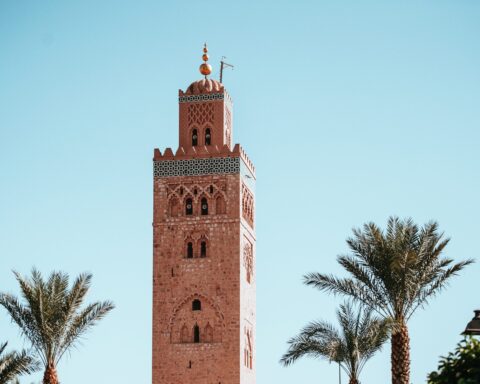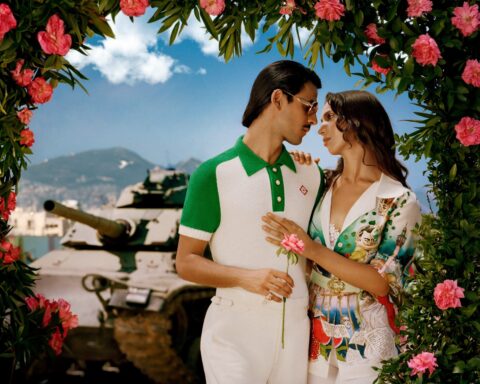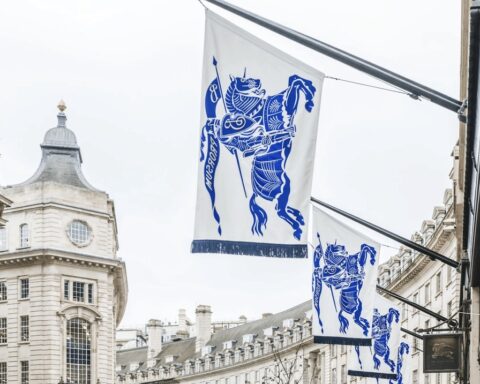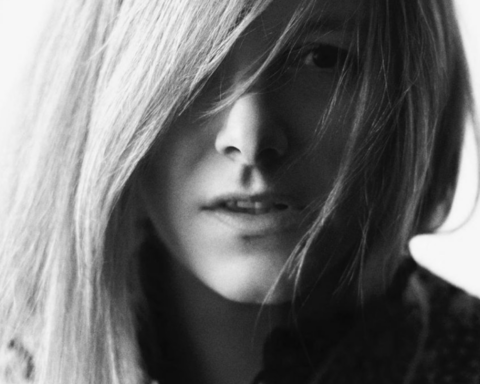[vc_row njt-role=”people-in-the-roles” njt-role-user-roles=”administrator,armember”][vc_column][vc_column_text]
The coronavirus crisis has not only had a financial impact on the luxury world. It has also profoundly changed it from the inside, pushing brands to reconsider their foundations and redefine themselves. According to a new report published on Wednesday, June 3 by the McKinsey consulting firm in partnership with the Italian Chamber of Fashion (CNMI) and the trade show organizer Pitti Immagine, luxury is expected to renew and even transform itself on the eve of a “new normality”.
The webinar “A perspective for the luxury industry during and after the coronavirus” organized on June 3rd by McKinsey in collaboration with Camera della Moda (CNMI) and Pitti Immagine, was an opportunity to understand how the luxury sector will evolve after the health crisis linked to the Covid-19 pandemic.
The different hypotheses all tend towards the same scenario: luxury will change profoundly, as will individuals, society and the world itself.
Drying up of demand and contraction on the luxury market
The first element highlighted by the survey is that people will consume fewer luxurious products in the future: in the best case (if the virus is contained), sales of luxury goods will lose between 100 and 110 billion euros in 2020, and in the worst case (if there is a second wave) revenues will be penalised by 130 to 140 billion in 2020, and a further 40 to 50 billion will be lost in 2021.
This means that in both cases, the luxury sector must expect a sharp contraction of its sales, “from 15 to 40% on average in 2020” according to Antonio Achille, Senior Partner and Global Head of Luxury Goods at McKinsey & company, whereas it weighed 390 billion euros before the crisis.
A fall in demand that will not, however, affect all luxury segments to the same extent: “Each category is being accused differently. Cosmetics (10 to 30%) and the leather and accessories segment (15 to 35%) are resisting better, especially as stores have reopened and people have started to buy items such as small bags. Ready-to-wear, on the other hand, was hit hard (20-40%), as well as watches and jewellery (25-45%).” continues Antonio Achille.
Those gloomy scenarios for the future of luxury have been confirmed by the 80 CEOs of prestigious companies such as Kering, Missoni, Valentino, Brioni and Tod’s interviewed for the survey: indeed, only 3% of them expect a return to normality and up to 43% of them expect us to enter a new era of luxury where the rules will have to be redefined, with some of its fundamental elements having to be radically changed.
So we should not only expect a weakening of the demand for luxury products but also a real change in the nature of this industry in the months and years to come.
Towards more reliable, sustainable and handcrafted luxury
According to the joint McKinsey-CNMI-Pitti survey, the majority of the 1,000 U.S. and EMEA luxury shoppers interviewed will return to the stores.
But this will be done in a completely different way.
80% of shoppers will enter a luxury store with extreme caution, provided that the stores inspire confidence and trust in them, notably by putting in place special safety procedures provided by health authorities to limit the risks of contagion.
A new way of shopping is therefore emerging, a much more conscious, careful and planned way of purchasing, including a preference for small shops rather than overcrowded shopping malls.
But more than that, it is luxury itself that will be called upon to metamorphose. The health crisis would indeed have led to a new concept of the word “luxury” which, for half of the people questioned, will no longer only mean the purchase of products of superior quality and design, but also a “Silent Luxury“, a more sober, less ostentatious luxury. In short, a luxury that will privilege the quality and values of a brand, rather than the flashy, glitzy effect of certain pieces.
“What we are waiting for is a return to silent luxury, as opposed to bling bling, i.e. brands that invest in craftsmanship and sustainability“, says Mr Achille.
Also, the report shows how customers will move towards a choice of brands that will have evolved technologically, with an online channel that will become increasingly central to their buying experience. In fact, 24% of luxury goods consumers said they had had their first web shopping experience during the lockdown and had enjoyed it.
The scenario of the next “new normal” will then see people spending better and with a much more conscious mind, in a luxury sector characterized by an increasingly innovative and convenient e-commerce that will combine discretion, durability, inclusion, security and reliability.
Read also > Innovation & research in fashion and luxury: the carats study is reissued
Featured photo : © Chanel / Facebook[/vc_column_text][/vc_column][/vc_row][vc_row njt-role=”not-logged-in”][vc_column][vc_column_text]
The coronavirus crisis has not only had a financial impact on the luxury world. It has also profoundly changed it from the inside, pushing brands to reconsider their foundations and redefine themselves. According to a new report published on Wednesday, June 3 by the McKinsey consulting firm in partnership with the Italian Chamber of Fashion (CNMI) and the trade show organizer Pitti Immagine, luxury is expected to renew and even transform itself on the eve of a “new normality”.
The webinar “A perspective for the luxury industry during and after the coronavirus” organized on June 3rd by McKinsey in collaboration with Camera della Moda (CNMI) and Pitti Immagine, was an opportunity to understand how the luxury sector will evolve after the health crisis linked to the Covid-19 pandemic.
The different hypotheses all tend towards the same scenario: luxury will change profoundly, as will individuals, society and the world itself.
[…][/vc_column_text][vc_cta h2=”This article is for subscribers only.” h2_font_container=”font_size:16″ h2_use_theme_fonts=”yes” h4=”Subscribe now!” h4_font_container=”font_size:32|line_height:bas” h4_use_theme_fonts=”yes” txt_align=”center” color=”black” add_button=”right” btn_title=”I SUBSCRIBE!” btn_color=”danger” btn_size=”lg” btn_align=”center” use_custom_fonts_h2=”true” use_custom_fonts_h4=”true” btn_button_block=”true” btn_custom_onclick=”true” btn_link=”url:https%3A%2F%2Ftest2023.luxus-plus.com%2Fen%2Fabonnements-et-newsletter-2%2F|||”]Unlimited access to all the articles and live a new reading experience, preview contents, exclusive newsletters…
Already have an account? Log in.
[/vc_cta][vc_column_text]Featured photo : © Chanel / Facebook[/vc_column_text][/vc_column][/vc_row][vc_row njt-role=”people-in-the-roles” njt-role-user-roles=”customer”][vc_column][vc_column_text]
The coronavirus crisis has not only had a financial impact on the luxury world. It has also profoundly changed it from the inside, pushing brands to reconsider their foundations and redefine themselves. According to a new report published on Wednesday, June 3 by the McKinsey consulting firm in partnership with the Italian Chamber of Fashion (CNMI) and the trade show organizer Pitti Immagine, luxury is expected to renew and even transform itself on the eve of a “new normality”.
The webinar “A perspective for the luxury industry during and after the coronavirus” organized on June 3rd by McKinsey in collaboration with Camera della Moda (CNMI) and Pitti Immagine, was an opportunity to understand how the luxury sector will evolve after the health crisis linked to the Covid-19 pandemic.
The different hypotheses all tend towards the same scenario: luxury will change profoundly, as will individuals, society and the world itself.
[…][/vc_column_text][vc_cta h2=”This article is for subscribers only.” h2_font_container=”font_size:16″ h2_use_theme_fonts=”yes” h4=”Subscribe now!” h4_font_container=”font_size:32|line_height:bas” h4_use_theme_fonts=”yes” txt_align=”center” color=”black” add_button=”right” btn_title=”I SUBSCRIBE!” btn_color=”danger” btn_size=”lg” btn_align=”center” use_custom_fonts_h2=”true” use_custom_fonts_h4=”true” btn_button_block=”true” btn_custom_onclick=”true” btn_link=”url:https%3A%2F%2Ftest2023.luxus-plus.com%2Fen%2Fabonnements-et-newsletter-2%2F|||”]Unlimited access to all the articles and live a new reading experience, preview contents, exclusive newsletters…
Already have an account? Log in.
[/vc_cta][vc_column_text]Featured photo : © Chanel / Facebook[/vc_column_text][/vc_column][/vc_row]


